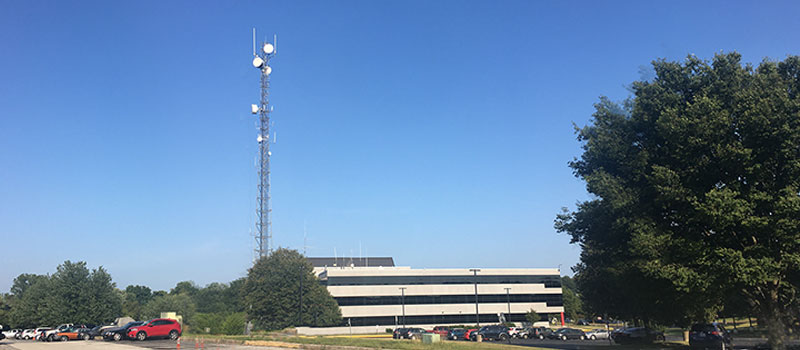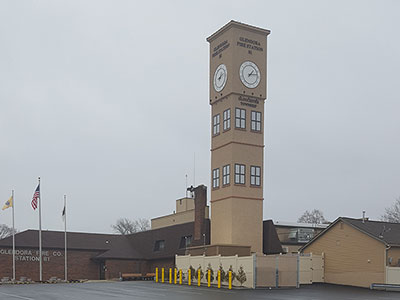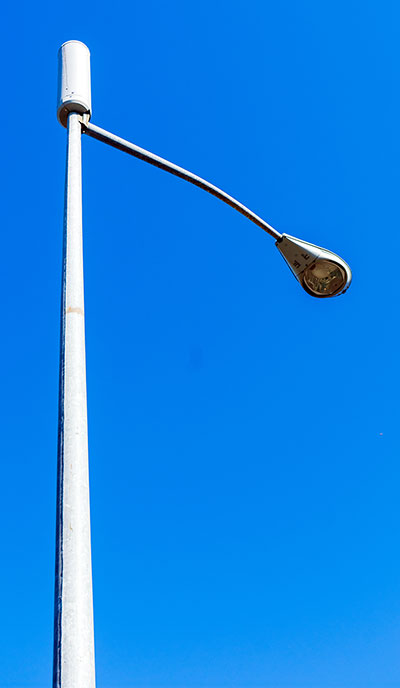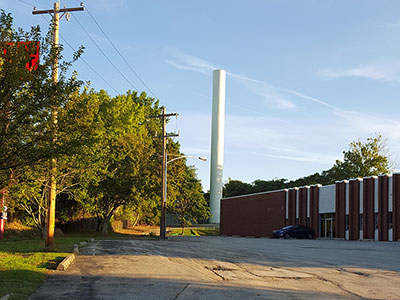Antennas can be hidden from view when located within radio frequency-neutral structures. Image courtesy of Seidel Planning & Design.
How it Works
Cellular and wireless communication facilities, including cell towers, are often the most visible part of a nationwide mobile communication and wireless internet system. They can include antennas placed on freestanding towers or attached to other tall structures, and some facilities include arrays of smaller antennas that are more geographically distributed. These facilities can be visually disruptive and may need to be sited on municipal rights-of-way. Therefore, municipalities have adopted regulations to control their location, size, design and distribution.
Much of the growth of cellular communications facilities was enabled by the Federal Telecommunications Act of 1996. This Act affects almost all aspects of telecommunications, but this Act specifically preserves the ability of municipalities to regulate the placement, construction, and modification of these facilities, with certain limitations (see Section 601.[c][1]). Municipal regulations are typically located in zoning ordinances, where location, design, landscaping, setbacks, and other provisions can be used to mitigate their effects on adjoining areas.
Benefits
Aesthetics
The size of cell towers and their ground-mounted equipment can be inconsistent with the visual character of residential neighborhoods. While municipalities cannot prohibit cellular communications services from their communities, they can regulate their placement and design. Evergreen foliage, decorative fencing, and antenna camouflage techniques are commonly used.
Limitations on Proliferation
Municipalities can require a cell provider to use existing tall structures or to co-locate two or more systems on one existing tower before proposing a new facility. This can reduce construction costs and limit the proliferation of cell towers.
Controls on Location
Regulations can generally limit wireless facilities to specific zoning districts, such as industrial and commercial areas. Municipalities can also encourage their location in more-appropriate areas by permitting them "by-right" in certain districts or if they do not exceed specific limits, or by special exception or conditional use when the facilities are proposed in other areas. Regardless, regulations must not be overly burdensome or have the effect of prohibiting them.
Regulations can also limit the visual effects of towers and ground-based facilities by requiring them to be set back farther from lot lines (especially in residential areas), and ground-based facilities can be extensively landscaped. Some municipalities require towers to be set back from lot lines a distance equal to their height.
Municipalities need to be aware that the Pennsylvania Public Utilities Commission has adopted a rule regarding its role in requiring the provision of small cell facilities on utility poles (see Anticipated Technological Improvements on the "Get Started" page).
Municipalities should identify appropriate areas for cellular facilities. Image courtesy of Seidel Planning & Design.
Small cellular facilities can be located on existing poles.
Get Started
Identify Types of Facilities
Cellular facilities include monopole, guyed, lattice or self-supported towers that are visually distinctive, and these different facilities should be defined in the zoning ordinance. Ground-based facilities such as equipment cabinets are also required.
Adopt Zoning Regulations
Regulations should specify where the facilities will be permitted, and how they will be regulated. Co-location of two or more antennae should be required. The various types of facilities should be defined in the Ordinance.
Include Design Requirements
Municipalities can encourage better designs by requiring extensive landscaping around the ground-based equipment, compatible colors, deeper setbacks when possible, and promoting “stealth” techniques such as designing the tower to mimic the appearance of a tree. Regulations can also encourage facilities to be placed on existing tall structures such as water towers and within cupolas and steeples.
Anticipate Technological Improvements
Municipalities should plan for new wireless technologies, such as “distributed area network” facilities that require smaller, but more antennas. Tall structures should also use radio frequency-neutral building materials to permit the internal installation of antennas, where they will not be visible.
Mobile fifth-generation (5G) wireless systems are the next upgrade of wireless technology, offering faster speeds, greater capacity and better reliability. 5G involves small cells that require less power and have shorter ranges, but the equipment can collocate on existing infrastructure. This new technology will require updated municipal permitting procedures, as well as new rights of way and streamlined construction processes to make it economically feasible.
Anticipate Controversy
When a cell tower is proposed near a residential area, residents may object to its perceived effects on their property values, its aesthetics, and the perceived health effects of exposure to radio frequency energy. Municipalities can engage an independent expert to review the applicant’s proposal and recommend improvements. Municipalities should also be aware that some residents believe that cellular facilities, including micro facilities, are linked to some illnesses. The Federal Communications Commission has studied this issue.
This tower in Plymouth Township, Montgomery County was manufactured with stealth technologies to conceal the communications antenna and equipment and minimize visual impact. Image courtesy of Seidel Planning & Design.
Considerations
Wireless communications facilities are extensively governed by Federal laws, Federal Communications Commission rulings, and other provisions that place constraints on local land use regulations.
Federal Telecommunications Act of 1996
This Act and subsequent rulings by the FCC preempt some local regulations regarding wireless facilities.
American Recovery and Reinvestment Act of 2009
The implementation of this Act resulted in a requirement that municipalities act on applications for antenna tower co-locations within 90 days, and 150 days for new towers.
Wireless Towers Cannot Be Prohibited
Zoning cannot prohibit wireless providers, and cannot discriminate between competing wireless providers.
Matters Relating to Radio Frequencies Are Beyond Municipal Control
Municipalities cannot deny applications based on perceived hazards of radio frequency emissions or potential interference with other frequencies.
Agricultural Lands and Scenic Vistas Can Be Preserved
Federal regulations will not preempt local land use regulations based on the preservation of agricultural land and scenic vistas.
Pennsylvania Act 50 of 2021
Act 50 creates the Small Wireless Facilities Deployment Act which provides legislation on the deployment of 5G high-speed technology and the rights of local municipalities. The Act encourages the deployment of small cell wireless facilities by classifying them as permitted uses in all "areas" in a municipality except "underground districts." Act 50 defines "small wireless facility" to include antennae that are limited to three cubic feet in volume and are located on poles that are not more than 50 feet in height. Municipalities are permitted to charge application fees and yearly fees for the use of rights-of-way, limit the aesthetic impacts of the facilities, and encourage collocation.

East Bradford Township's regulation of cellular facilities in Zoning Ordinance Section 112.97.1 regulates non-tower facilities as accessory uses when they are located on existing electrical transmission towers, which can help discourage the proliferation of new cell towers.
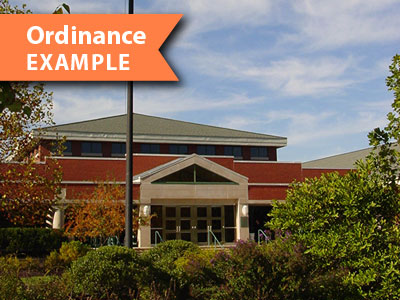
Tredyffrin Township regulates cellular communications facilities in Section 208-115 of its zoning ordinance, requires them to be located in industrial zoning districts, mandates landscaping designed by a landscape architect, and requires a demonstration that existing buildings cannot be used for communications facilities.
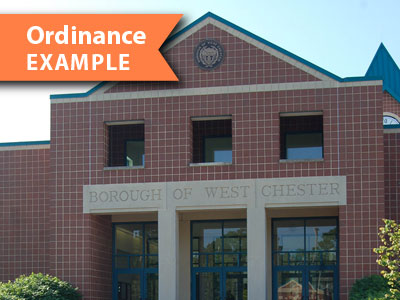
West Chester Borough regulates wireless communication facilities in ways that accommodate tower based and non-tower based facilities, protect the Borough's Historic District, and anticipate technological advances.
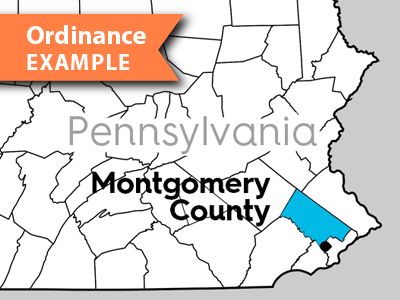
Lower Merion Township regulates telecommunications facilities in Section 140-1 of its zoning ordinance, and includes extensive definitions, regulations relating to facilities within public rights-of-way and outside rights-of-way, specific recognition of FCC regulations, fees to be paid to the township, and maintenance requirements.


